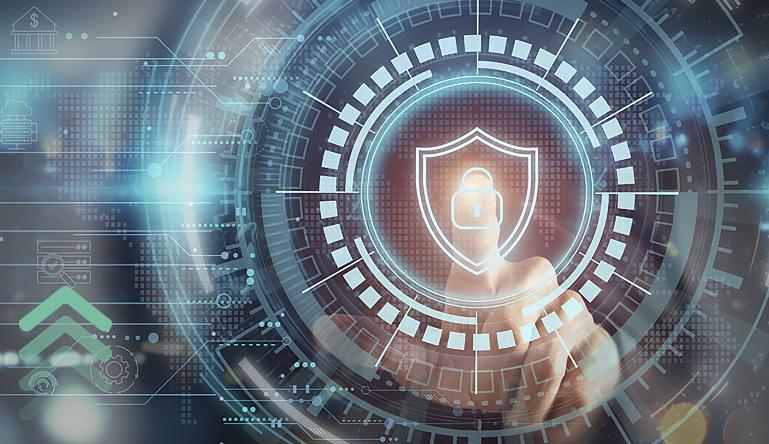-
 Chief Information Security Officer, Catalis
Chief Information Security Officer, CatalisA CISSP-certified cybersecurity leader, he brings 12+ years of experience securing complex systems and guiding strategic risk management.
View all posts
Strengthening Government Systems for a Secure Digital Future
As governments embrace digital transformation, from online tax portals and permitting systems to real-time payment processing, cybersecurity has become a foundational element of public trust. Citizens expect the same level of protection from their local and state agencies that they receive when banking online or shopping with leading retailers. Yet cybercriminals know that public-sector organizations often operate on legacy systems and tight budgets, making them appealing targets.
That’s why cyber hygiene is fundamental to modern government security. Much like personal hygiene keeps individuals healthy, cyber hygiene refers to the day-to-day practices, policies, and technologies that keep digital systems clean, resilient, and secure. For government agencies, strong cyber hygiene isn’t just IT housekeeping; it’s a critical strategy for protecting sensitive information, maintaining compliance, and future-proofing government operations with modern software.
Let’s look at what cyber hygiene really means, why it’s essential for government agencies, and the steps leaders can take to build stronger, safer digital services.
What Is Cyber Hygiene?
Cyber hygiene is a set of ongoing practices designed to protect digital systems, networks, and data against security threats. It’s about building good habits, consistent, repeatable actions that strengthen an agency’s security posture.
Just as brushing your teeth prevents cavities, cyber hygiene helps prevent breaches by minimizing weak points attackers exploit. Common elements of cyber hygiene include:
- Regular software and firmware updates
- Strong identity and access management policies
- Data backup and recovery planning
- Continuous network monitoring and vulnerability assessments
- Employee security awareness training
- Adoption of data security best practices for government systems
When done well, cyber hygiene helps reduce the attack surface, making it harder for malicious actors to infiltrate public systems and disrupt services.
Why Cyber Hygiene Matters for Government Agencies
Government organizations hold a wealth of sensitive information, from payment card data and tax records to licensing details, court filings, and public safety reports. A single breach can lead to financial losses, reputational damage, and diminished citizen confidence.
Protecting Citizen Data and Public Trust
Cyberattacks targeting municipalities, counties, and state agencies are on the rise. Ransomware and phishing campaigns frequently disrupt essential services and put citizen data at risk. Solid cyber hygiene creates barriers that help prevent unauthorized access to personal and payment information.
Meeting Compliance Standards
Regulations such as the Payment Card Industry Data Security Standard (PCI DSS), CJIS requirements, and state-level privacy laws set high expectations for how agencies secure their data. Strong cyber hygiene, including encryption, access controls, and continuous monitoring, helps agencies stay compliant and avoid penalties.
Reducing Financial and Operational Risk
The costs of a cyber incident go far beyond IT recovery. Agencies may face legal liabilities, lost revenue, expensive remediation efforts, and loss of community trust. Proactive hygiene is far more cost-effective than cleaning up after an attack.
Enabling Innovation Without Sacrificing Security
Adopting modern tools, such as artificial intelligence for fraud detection in government programs or blockchain technology for secure government records, requires a strong foundation. Agencies with well-maintained, secure environments can innovate confidently while keeping systems safe.
Core Cyber Hygiene Practices for Public-Sector IT Teams
Maintain an Accurate Asset Inventory
You can’t protect what you don’t know exists. Catalog every device, server, application, and data repository in your environment. Include cloud systems and remote endpoints to get a full picture of your attack surface.
Patch and Update Systems Regularly
Outdated software and firmware are a hacker’s dream. Set up automated patch management where possible, and schedule regular reviews to ensure legacy systems are updated or securely isolated.
Implement Strong Identity and Access Management
Adopt a zero trust security architecture for government payment systems by enforcing multi-factor authentication (MFA), least-privilege access, and strict session controls. No user or device should be inherently trusted.
Backup and Encrypt Sensitive Data
Data loss or theft can cripple an agency. Maintain encrypted backups stored in secure, off-site or cloud environments. Test recovery plans to ensure quick restoration in the event of an incident.
Monitor Continuously and Detect Anomalies
Deploy security tools capable of spotting unusual patterns, failed logins, and unauthorized data movement in real time. AI-driven systems can provide smarter, faster detection than rule-based approaches.
Train Staff to Recognize Threats
Human error remains one of the biggest cybersecurity risks. Regular phishing simulations, policy refreshers, and incident response drills help keep staff prepared and vigilant.
Secure Remote and Mobile Access
With more public employees working from home or in the field, agencies must secure remote connections with VPN alternatives, endpoint compliance checks, and zero trust principles.
Emerging Trends That Strengthen Cyber Hygiene
Cyber hygiene isn’t static; it evolves alongside new technologies and threats. Here’s what forward-thinking agencies are adopting now:
AI and Machine Learning for Smarter Defense
AI-driven tools can analyze thousands of transactions or system logs in real time to detect anomalies. For example, artificial intelligence for fraud detection in government programs helps agencies stop fraudulent payments before they’re processed, reducing losses and administrative burdens.
Zero Trust Security Architecture
As agencies modernize payment platforms, zero trust security architecture for government payment systems ensures every access request is verified and monitored. It limits the damage of compromised credentials and streamlines audits by clearly defining who has access to what.
AI Ethics Guidelines for Responsible Adoption
With the rise of AI, public agencies must also consider AI ethics guidelines for government technology adoption, ensuring decisions about data usage, privacy, and bias mitigation are transparent and fair.
By blending these innovations with foundational cyber hygiene, governments can future-proof operations with modern software while staying compliant and resilient.
Building a Culture of Cyber Hygiene
Technology alone isn’t enough. Cyber hygiene must become part of your agency’s culture. Leadership must prioritize security at every level, while IT and finance teams work together to align compliance and payment protection efforts. Staff should understand their role in safeguarding citizen data and stay informed about evolving threats. Regular communication, clear policies, and continuous training help ensure security isn’t just a technical requirement; it becomes part of the agency’s DNA.
Partnering with Catalis to Build Stronger Security Foundations
Maintaining strong cyber hygiene is critical for safeguarding citizen data and keeping digital government services resilient. Yet staying ahead of evolving threats while modernizing legacy systems can stretch the resources of any public agency.
Catalis supports this mission by equipping governments with secure, compliance-ready technology. Our cloud-based Payments platform includes PCI-validated Point-to-Point Encryption (P2PE) to protect every transaction. It also integrates with zero trust security architecture for government payment systems, leverages artificial intelligence for fraud detection in government programs, and helps agencies meet stringent standards such as PCI DSS and CJIS.
We design our solutions with the future in mind, helping agencies future-proof their operations with modern software while maintaining the highest levels of security and compliance.
By strengthening cybersecurity at the foundation, Catalis helps governments protect public trust and deliver reliable, citizen-focused digital services.
Visit Catalis for a comprehensive list of our government/public sector solutions.


